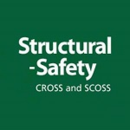Failure of cast iron beams
Many buildings utilising cast iron (CI) continue to give good service with adequate reliability when used in a risk assessed manner and current best practice documents. As is normal with this type of beam, there is rarely any apparent warning of imminent collapse.
Certain combinations of actions may lead to an unsafe situation that should be investigated by a competent structural engineer. These situations include:
- Additional loading on a CI beam, typically arising from further deadweight added since original completion. The unregulated increase of load on a structure should always be a matter of concern.
- Long-standing ingress of water leading to corrosion, deterioration of the concrete infill, and loss of any composite action. Extended basements or roof garden arrangements are particularly prone to this action.
- The beams working at high levels of stress as originally installed. This is more likely in a domestic structure where the beam may have been sized by rule of thumb.
Professionals working in this field, or with clients responsible for property of this type and era, should be aware of these issues and be ready to advise the relevant parties of the need for a structural risk assessment if the identified conditions exist.
[edit] Related articles on Designing Buildings Wiki
- Brittle fracture.
- Cast iron.
- Conservation of Architectural Ironwork.
- Defects in construction.
- Degradation of construction materials.
- Failure of metals.
- Flat roof defects.
- Girder.
- Graphitisation.
- Iron.
- Metal.
- Roofing defects.
- Rust.
- Structural failures.
- Structural steelwork.
- Tension.
- Weathering steel.
Featured articles and news
Key points for construction at a glance with industry reactions.
Functionality, visibility and sustainability
The simpler approach to specification.
Architects, architecture, buildings, and inspiration in film
The close ties between makers and the movies, with our long list of suggested viewing.
SELECT three-point plan for action issued to MSPs
Call for Scottish regulation, green skills and recognition of electrotechnical industry as part of a manifesto for Scottish Parliamentary elections.
UCEM becomes the University of the Built Environment
Major milestone in its 106-year history, follows recent merger with London School of Architecture (LSE).
Professional practical experience for Architects in training
The long process to transform the nature of education and professional practical experience in the Architecture profession following recent reports.
A people-first approach to retrofit
Moving away from the destructive paradigm of fabric-first.
International Electrician Day, 10 June 2025
Celebrating the role of electrical engineers from André-Marie Amperè, today and for the future.
New guide for clients launched at Houses of Parliament
'There has never been a more important time for clients to step up and ...ask the right questions'
The impact of recycled slate tiles
Innovation across the decades.
EPC changes for existing buildings
Changes and their context as the new RdSAP methodology comes into use from 15 June.
Skills England publishes Sector skills needs assessments
Priority areas relating to the built environment highlighted and described in brief.
BSRIA HVAC Market Watch - May 2025 Edition
Heat Pump Market Outlook: Policy, Performance & Refrigerant Trends for 2025–2028.
Committing to EDI in construction with CIOB
Built Environment professional bodies deepen commitment to EDI with two new signatories: CIAT and CICES.
Government Grenfell progress report at a glance
Line by line recomendation overview, with links to more details.
An engaging and lively review of his professional life.
Sustainable heating for listed buildings
A problem that needs to be approached intelligently.
50th Golden anniversary ECA Edmundson apprentice award
Deadline for entries has been extended to Friday 27 June, so don't miss out!
CIAT at the London Festival of Architecture
Designing for Everyone: Breaking Barriers in Inclusive Architecture.
Mixed reactions to apprenticeship and skills reform 2025
A 'welcome shift' for some and a 'backwards step' for others.



























